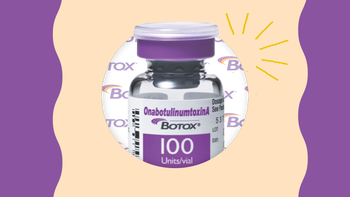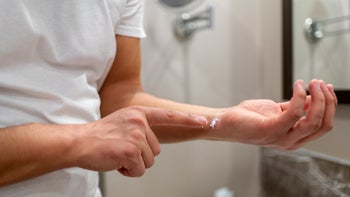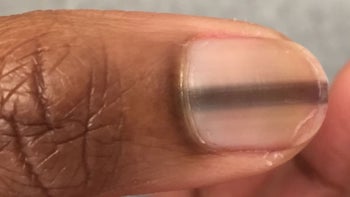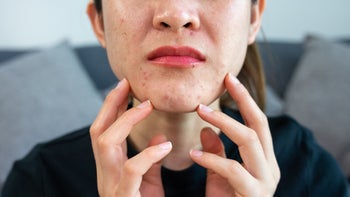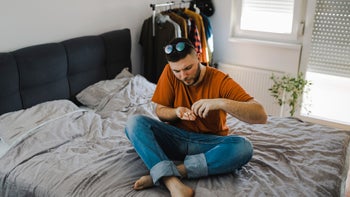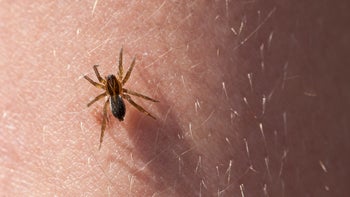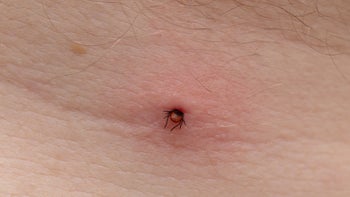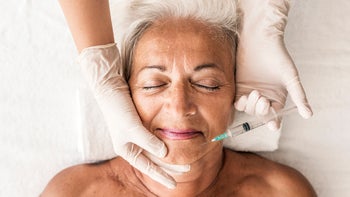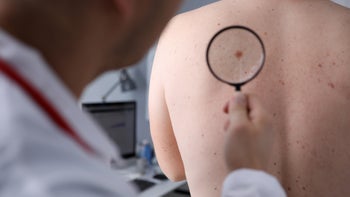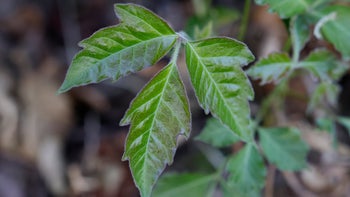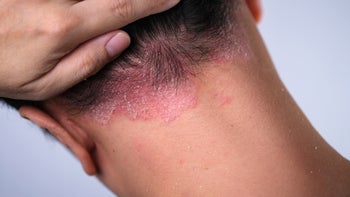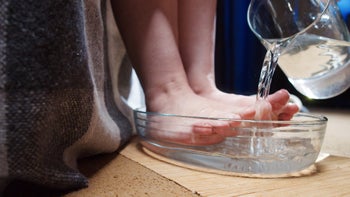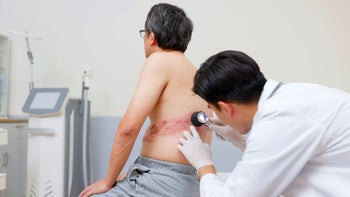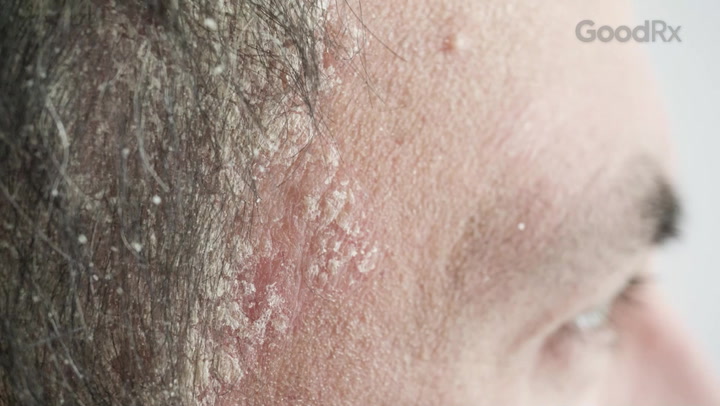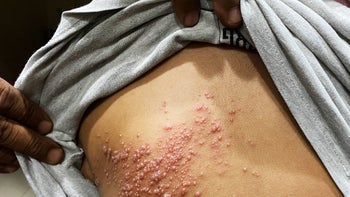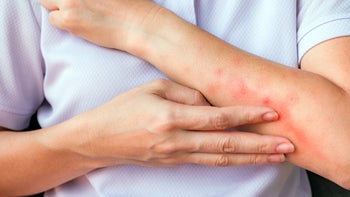
When Should You Worry About a Spider Bite? 6 Signs You Need Treatment
Key takeaways:
Most spider bites are mild and don’t cause any significant health problems. But they may cause skin itchiness, irritation, or redness.
The most common complications of a spider bite are infections of the skin. It’s also easy to mistake some skin infections and bug bites for spider bites.
A few spiders cause serious symptoms when they bite. These include black widow spiders, hobo spiders, and brown recluse spiders.
Table of contents
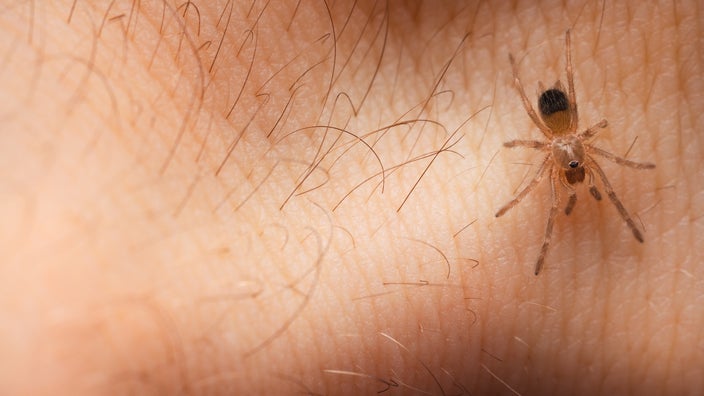
Spiders — and their bites — can be alarming. Often people worry that a spider bite might be poisonous. Fortunately, most non-poisonous spider bites are not serious. This is because very few spiders can bite through human skin. When they do, the bites usually cause mild irritation and redness.
But the concerns people have about spider bites aren’t unreasonable. Spider bites can get infected. And some spiders have venom in their bites, and these bites can lead to more serious symptoms. We’ll explain how to know when a spider bite may need medical attention.
What do spider bites look like?
Most spider bites are mild and may not be very noticeable. You may see a small bump on the skin, or a spot with a surrounding red (in fair skin) or brown (in darker skin) halo. Sometimes you may even see small bite marks in the center. Usually a spider bite goes away in 1 to 2 days.
But serious spider bites can cause more noticeable symptoms. These can include blisters, swelling, or dark-red, violet, or brown color changes. Sometimes skin starts to die and turns black or forms an open sore. These spider bites can take weeks or even months to resolve.
After a spider bite, most people notice the following symptoms:
Pain
Itchiness
A red or violet rash surrounding the bite (bullseye rash)
A red, purple, or brown blister (sometimes filled with blood)
Disclaimer: Some viewers may find several of the following images graphic or disturbing.
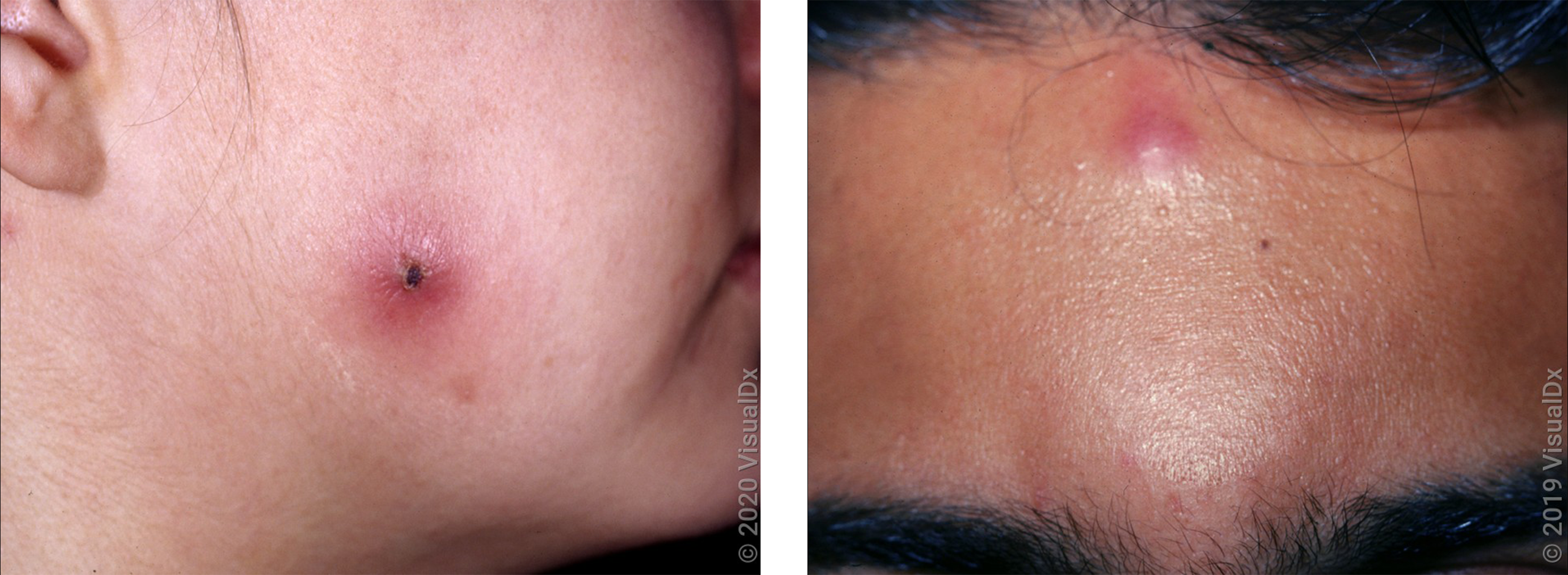
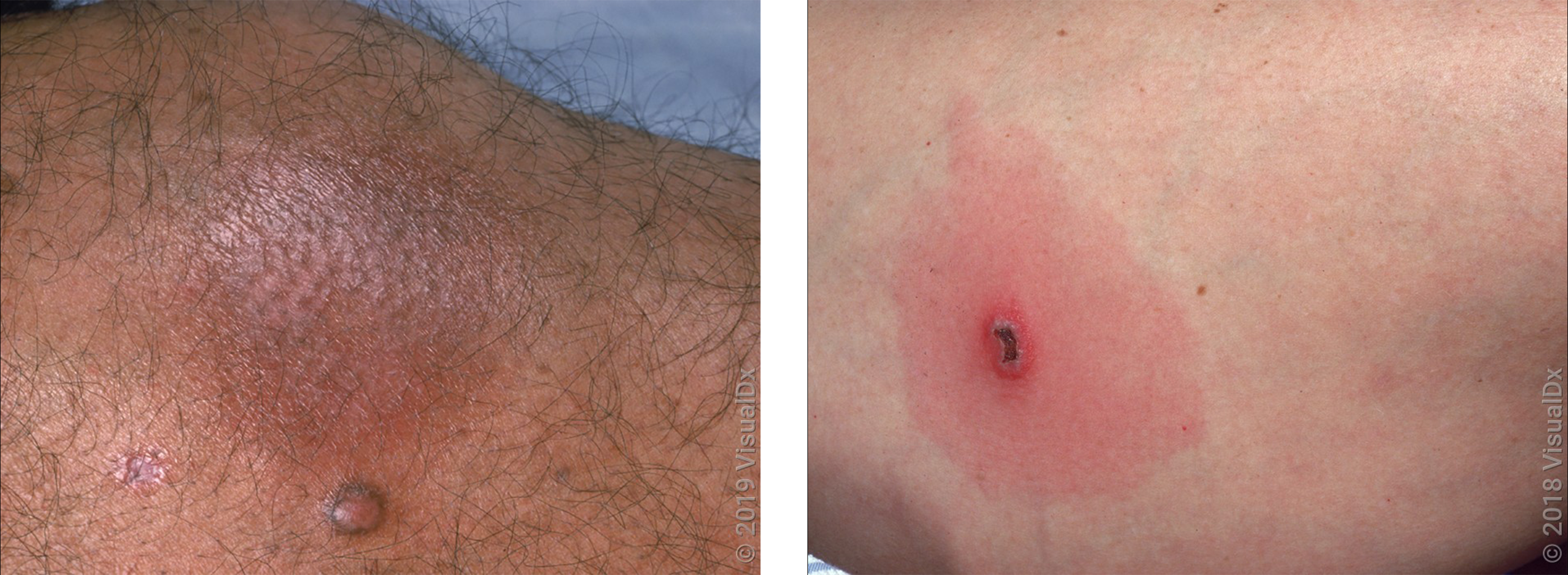
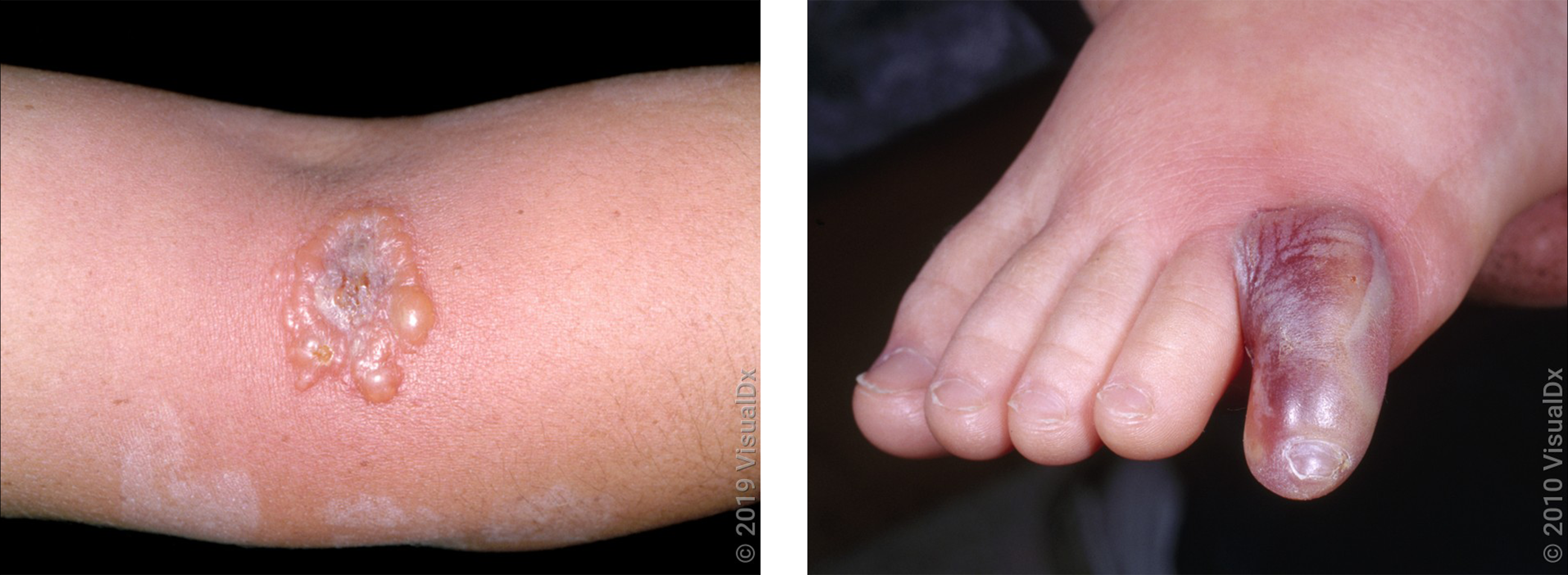
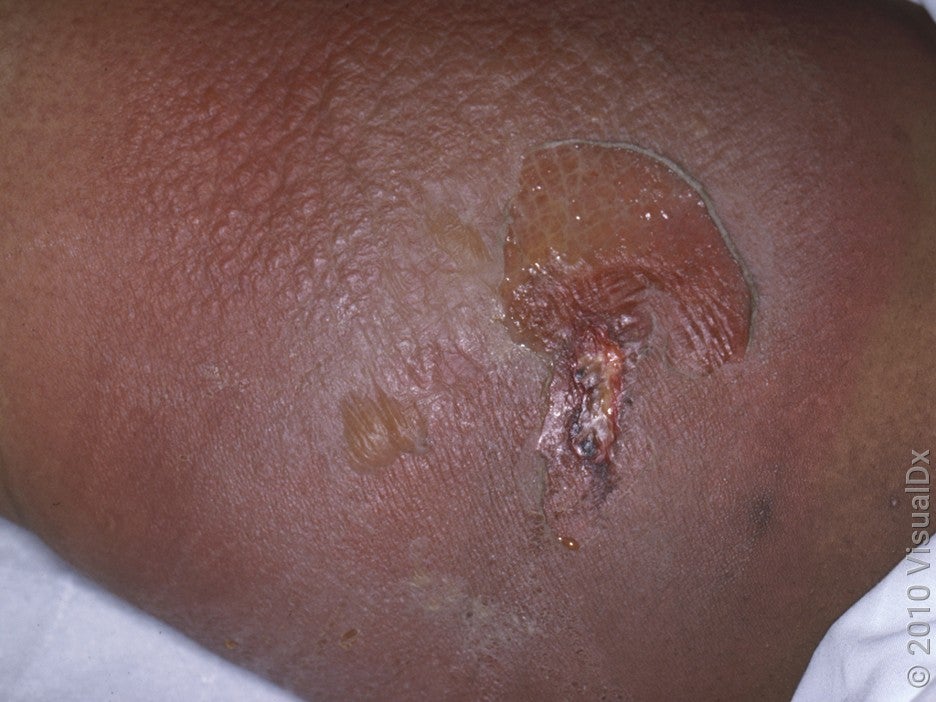
6 signs you should you get medical care for a spider bite
Most spider bites aren’t medical emergencies and will get better in a couple of days. In many cases, putting a cold compress on the bite helps. And if the itching is really bothersome, over-the-counter medications, like diphenhydramine (Benadryl), may help.
But there are some situations when you should get medical help for a spider bite.
1. Worsening redness around the bite
If the redness around the bite expands over a few days, instead of getting better, this could be an early sign of a skin infection called cellulitis. Cellulitis causes the skin and soft tissue to feel warm and painful.
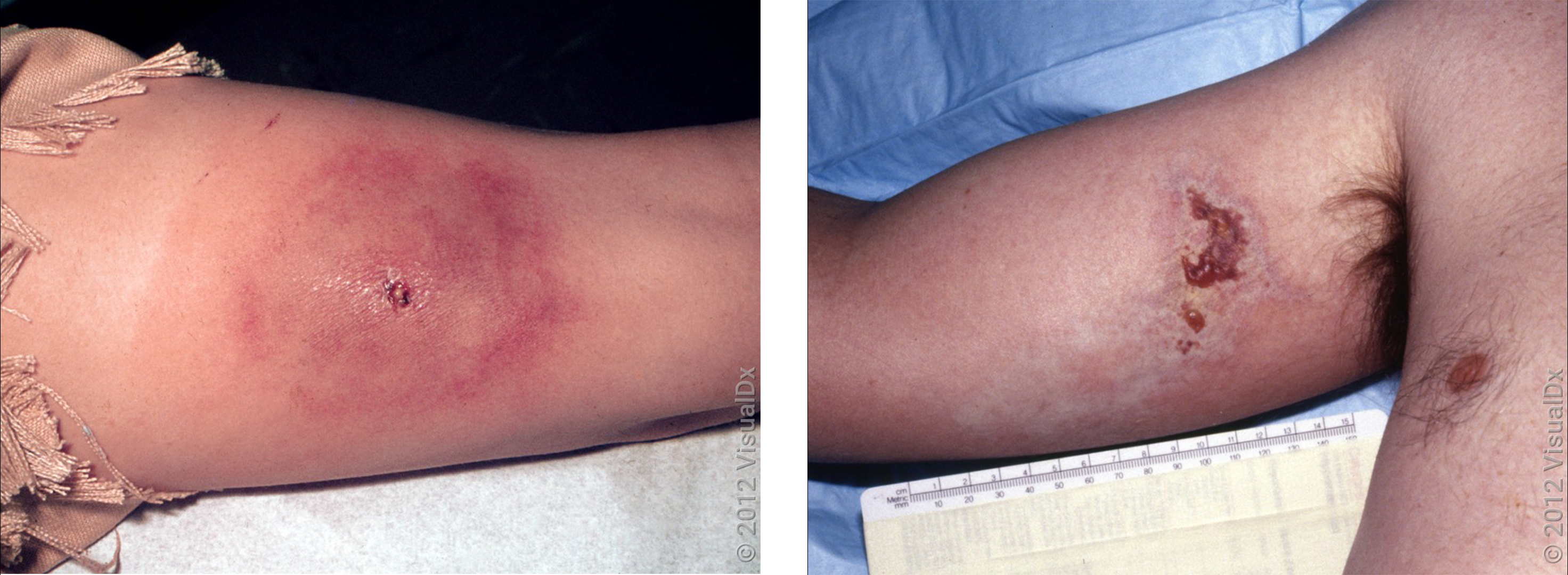
2. Black skin or open sores
In some situations, the skin around or underneath the bite may turn black or develop into an open sore. This is a sign that the skin is starting to die. This needs urgent medical attention to stop it from spreading. You may need a special surgical procedure — debridement — to remove dead tissue.
3. An abscess
An abscess is a pocket of pus and is often called a “boil.” It can look and feel like a large pimple. You may be able to see the white-colored pus inside or leaking out of the abscess. But if the abscess is far beneath the skin, you may feel pain from it more than you can see it.
4. Fevers, chills, or body aches
Fever, chills, or body aches can be signs that you’ve had a serious spider bite or a worsening infection from a regular spider bite. If you have any of these symptoms, call your doctor’s office right away or head to the emergency room.
5. Extreme pain
Get help fast if you have severe pain at the site of the bite or somewhere else in your body. Keep in mind that pain may not happen right away. It could develop hours to a few days after the bite, so it’s important to monitor the spot.
6. Nausea and vomiting
Nausea and vomiting after a spider bite is rare, but it can be a sign of a venomous bite. When a spider releases a large amount of venom and toxins, this can cause symptoms throughout the body, like nausea and vomiting, stomach pain, and muscle spasms.
Nausea and vomiting can also happen as part of an allergic reaction to a spider bite, or as a reaction to a serious skin infection.
Which spider bites are poisonous?
A few spiders have a serious bite. But bites from these spiders aren’t common. Unless they’re defending themselves, these spiders don’t try to bite humans. But these bites may need prompt medical care when they happen.
The most common spiders with serious bites are:
Brown recluse spiders
Hobo spiders
Black widow spiders
When these spiders bite, they inject a toxin into the skin. The toxin in their bite causes different symptoms depending on the type of spider. Once you’ve been bitten, you can’t draw out poison from a spider bite. The best thing to do is to wash the area, apply ice to reduce swelling, and pay close attention to your symptoms.
At the site of the bite, you might notice:
Redness in light skin, or a violet or brown discoloration in darker skin
Swelling
Blistering
An open sore
Dead (black) skin
Bites from poisonous spiders can also cause generalized symptoms. Get medical care if you notice any of the following symptoms along with your spider bite:
Headache
Stomach pain
Nausea and vomiting
Fever and chills
Muscle spasms
Tingling and numbness in the arms or legs
What are the most common complications from a spider bite?
Even a regular, non-poisonous spider bite can cause complications. Run-of-the-mill spider bites can get infected. This may mean a cellulitis skin infection. Sometimes an abscess (a pocket of pus) can form.
No matter what type of infection you have — or why it happened in the first place — these infections typically need antibiotic treatment. And abscesses may need a small procedure to drain the pocket of pus.
How can you prevent spider bites?
To prevent spider bites, avoid areas where spiders are likely to live, like wood piles, garages, and sheds. It’s also a good idea to keep these tips in mind:
Wear gloves if working in areas where spiders may be.
Keep areas around your house clear of tires, old clothes, and other junk.
Plug any openings or crevices in your house.
Check your bedding before getting into bed and your shoes and clothing before putting them on.
Use insecticide on any high-risk areas, like around wood piles and baseboards.
If a spider does get on you, brush it off. Don’t crush it.
The bottom line
Most spiders don’t bite humans. And when they do, usually the bite is not serious. But serious spider bites can happen. Some signs of a serious bite are severe pain, blistering, or dark discoloration at the site of the bite. Spider bites can also get infected. This often starts as spreading redness of the skin, warmth to the touch, or a noticeable pocket of infection. When in doubt, get medical care to see if you need treatment.
Images used with permission from VisualDx (www.visualdx.com).
References
American Osteopathic College of Dermatology. (n.d.). Spider bites.
Centers for Disease Control and Prevention. (2018). Symptoms of venomous spider bites.
MedlinePlus. (2023). Spider bites.
MyHealth.Alberta.ca. (2022). Preventing spider bites.
Rahmani, F., et al. (2014). Poisonous spiders: Bites, symptoms, and treatment; an educational review. Emergency.




